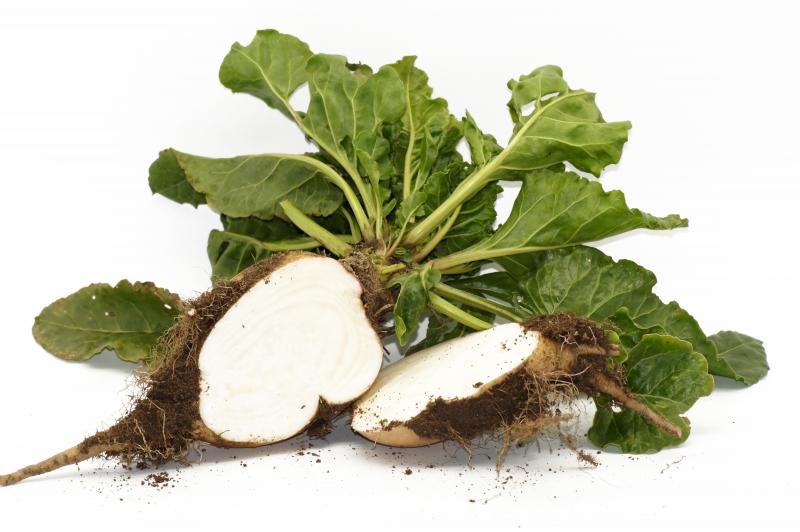A real albino whale living off Mocha Island, Chile, was a fierce sperm whale that survived numerous attacks from whalers and became the basis of Herman Melville's novel “Moby Dick.” Albinos occur on land as well, with Lakota Indians treating the rare birth of an albino bison as a sign from the heavens. The National Bison Association estimates that an albino bison is born only once out of every 10 million births.
So too in the garden we have albino plants, with the tastiest being the albino beet (Beta vulgaris) from Holland. These smooth, round beets have solid-white, sweet roots packed with flavor. Best of all, white beets never bleed or stain. The beets can grow quite large without becoming woody or bitter, and they store well. In addition to the sweet roots, the tops or greens of albino beets are delicious raw or steamed.
Sow albino beet seeds outdoors as soon as soil can be worked in spring. Light frosts won't hurt them. Beets need loose, well-drained, fertile soil that is slightly alkaline. If your soil is hard clay, try working in compost or well-rotted manure. Add mulch such as grass clippings or straw around the plants.
Keep the soil moist but not soggy or waterlogged. Plant the seeds 1/2 inch deep, 2 inches apart in rows 24 inches apart. The seeds germinate in 5-10 days. Thin the plants to stand 6 inches apart in the rows. Blanch the beet roots by hilling soil up around the stems. For continuous harvests, plant every two weeks.
Albino beet seeds are often available from local nurseries, garden centers or by mail from seed houses such as Seed Savers Exchange, seedsavers.org.
It is no surprise that these beets are truly sugar-sweet, like sugar from sugarcane. And yes, albino beet roots can also be used for making sugar.
Harvest albino beet roots when they are 2 inches or larger. You can pick beet greens anytime. Leave your fall crop of beets in the ground until early winter or when the soil starts to freeze.
Besides being sliced raw into salads or steamed as a side vegetable, you can cook albino beets by frying, or make them into pickles.
You can save your own seeds from albino beets to plant next year. Because beets are wind-pollinated, you need to separate them from related plants such as Swiss chard and other beets by at least two miles to keep genetic purity. It is easier to enclose the blossoms with netting and hand pollinate them.
Beets need to go through a winter in order to produce seed. Carefully dig up the roots and store them in sand, without the beets touching each other. Plant the saved roots in early spring, and they will soon go to seed. When the seed heads are fully developed and dry, the seeds will easily shake off of the stems. Albino beet seeds will last for up to five years when stored in a cool, dry place.
Plant albino beets for a delicious vegetable that is truly sweet as sugar, and enjoy them under a full moon while reading “Moby Dick.” And just maybe, once in 10 million, you will feel the soothing calm of the white bison.























































